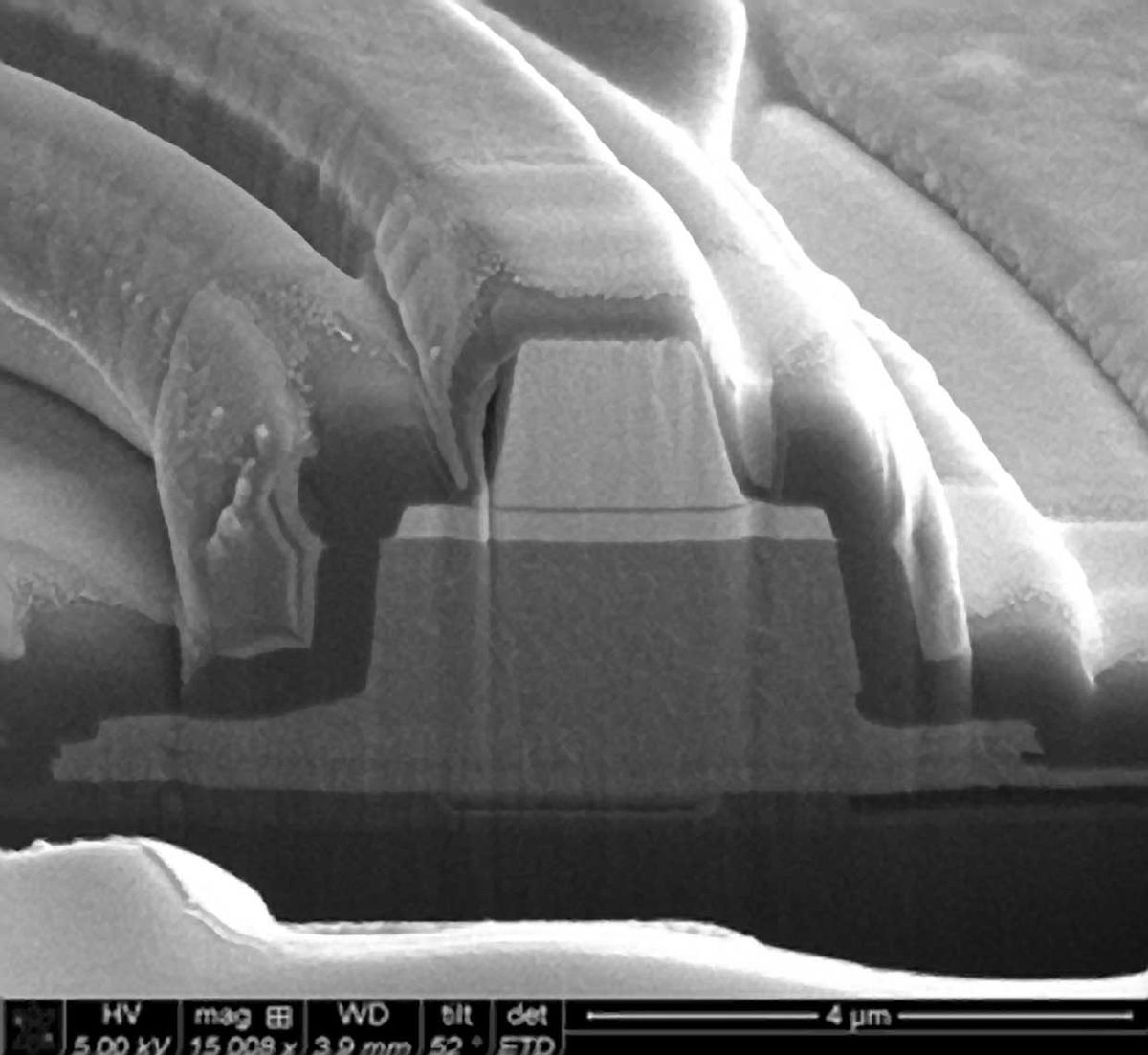Researchers at Hewlett Packard Labs, where the first practical memristor was created, have invented a new variation on the device—a memristor laser. It’s a laser that can have its wavelength electronically shifted and, uniquely, hold that adjustment even if the power is turned off. At the IEEE International Electron Device Meeting the researchers suggest that, in addition to simplifying photonic transceivers for data transmission between processors, the new devices could form the components of superefficient brain-inspired photonic circuits.
Different colors of light can travel simultaneously through optical fibers and other waveguides so photonic transceivers that can adjust their wavelength would lead to higher bandwidth connections between computers and eventually their processors. The wavelength at which semiconductor lasers shine can be shifted by either heating the device or through a particular kind of accumulation of charge in the device structure. However, both phenomena require power.
The hybrid silicon MOS microring laser is made by bonding a compound semiconductor wafer to a silicon wafer. The oxide at the interface is part of what gives the device have memristor properties.Illustration: Hewlett Packard Labs
Separately, memristors are devices that store memory as resistance. The right voltage signal can change the resistance, and that resistance will remain even if the power is turned off.
Bassem Tossoun, a researcher with HPE Labs wondered if you could build a laser that stores its frequency like a memristor. It turns out that it’s not only possible, HPE had unwittingly already constructed such a device. Tossoun started his exploration by simply trying experimenting on a two devices his colleague senior research scientist Di Liang, had developed called a hybrid silicon MOS microring modulator and the hybrid silicon MOS microring laser.
Both are multi-layer structures, that basically consist of concentric rings that form a diode laser with an oxide-based capacitor embedded inside it. By manipulating the voltage across this capacitor, different amounts of charge accumulate there. This modifies the device’s optical mode index—how much of a delay in phase light experiences as it travels down a waveguide—and therefore changing the wavelength of the emitted light.
“If we applied enough voltage bias, can [the microring device] switch like a memristor?” Tossoun asked. The immediate answer was yes. “We’ve actually been making these memristors and didn’t know.”
Figuring out why it works took more effort. Memristors are usually two metal electrodes with a small patch of insulator, such as titanium oxide, sandwiched between them. In its natural state, resistance across the insulator is high. But with enough voltage, oxygen atoms in the insulator become ionized and migrate to an electrode, leaving behind conductive filaments that reduce resistance. It’s a reversible process, of course, switching the voltage drives the ions back into place and erases the conductive path.

Experiments and simulations appear to show that when the device is in its low-resistance state, it heats up, lengthening (red-shifting) the output light’s wavelength. When it’s in the high-resistance state, charge carriers accumulate around the oxide shortening (blue-shifting) the device’s wavelength. (Boosting the voltage even more in the off-state was already known to further push the microring laser into the blue, shifting the wavelength with one-billionth the energy of other methods.) In the devices Tossoun used, the switch occurs in about 75 nanoseconds, but it only takes place across about 1 nanometer of wavelength.
It’s too early to be sure what role a memristor laser would play, but Tossoun says the group is exploring the design of neuromorphic optical circuits with them. “The grand prospect long term is that now we have the building blocks to build a system which integrates memory, computing, and high-speed optical interconnects all on the same chip for the first time,” says Liang.
Samuel K. Moore is the senior editor at IEEE Spectrum in charge of semiconductors coverage. An IEEE member, he has a bachelor's degree in biomedical engineering from Brown University and a master's degree in journalism from New York University.



